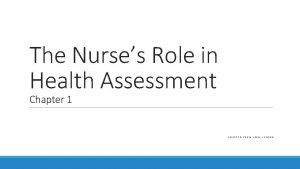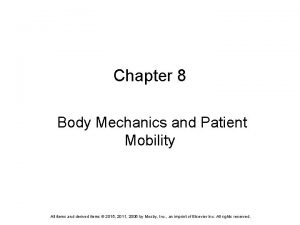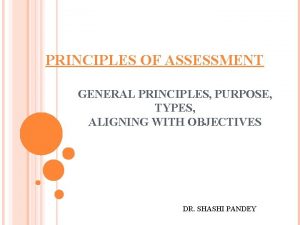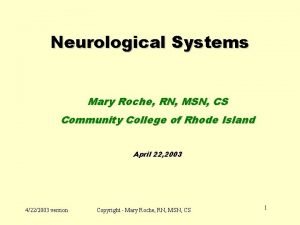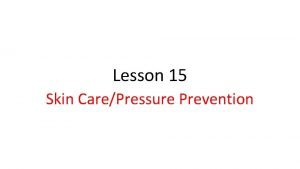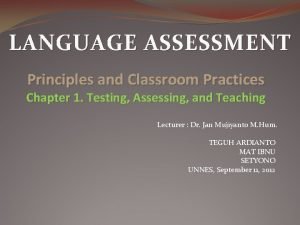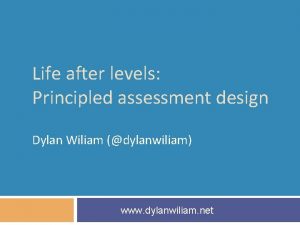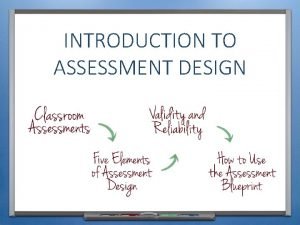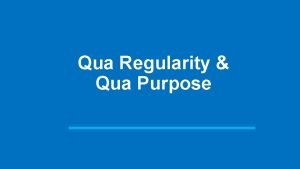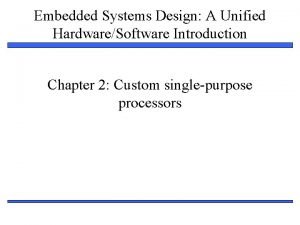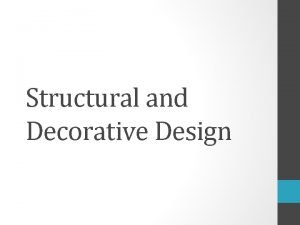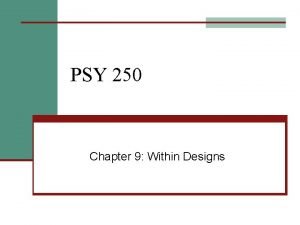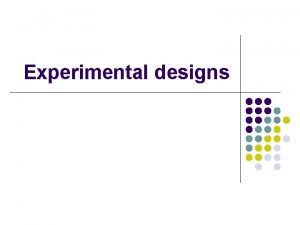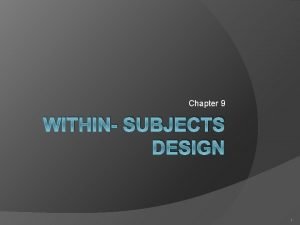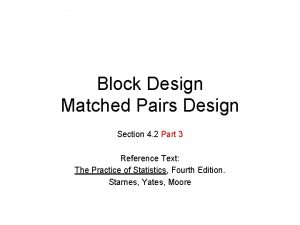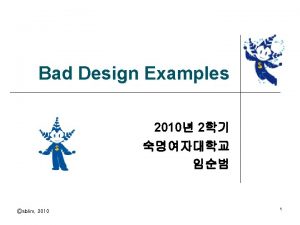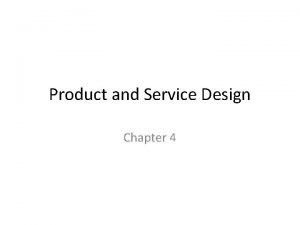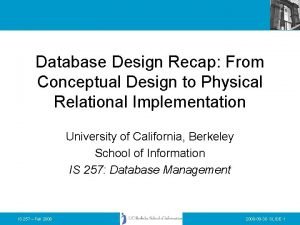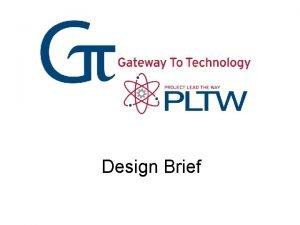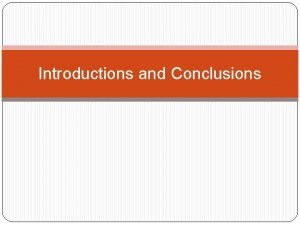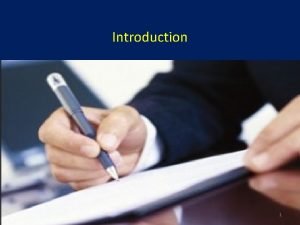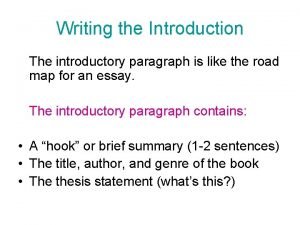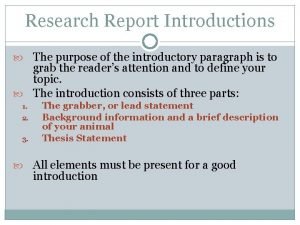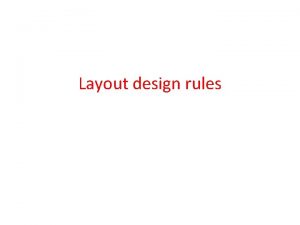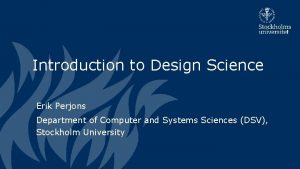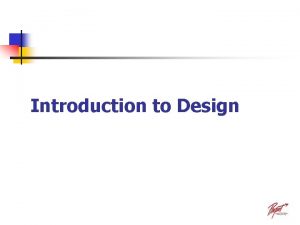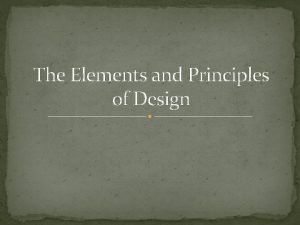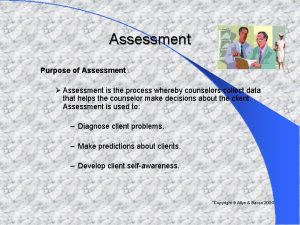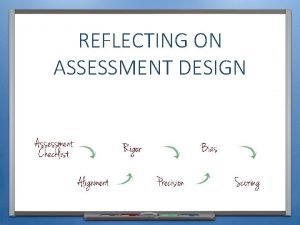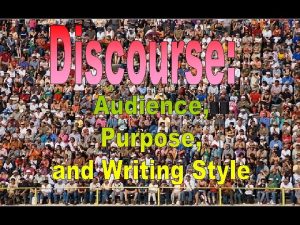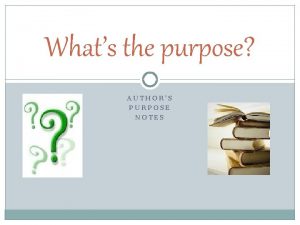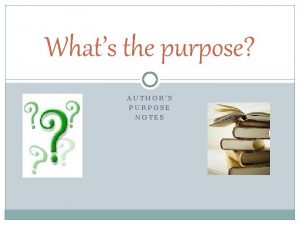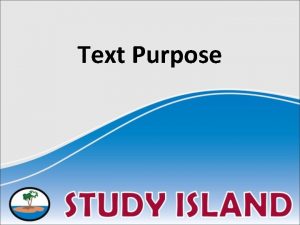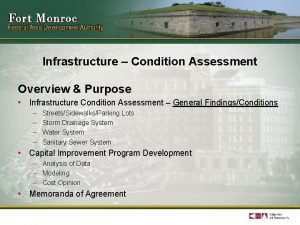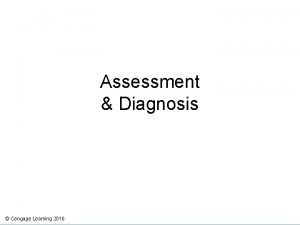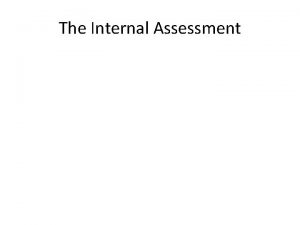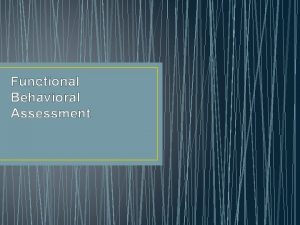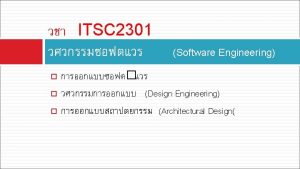INTRODUCTION TO ASSESSMENT DESIGN INTRODUCTION PURPOSE INTRODUCTION PURPOSE














































- Slides: 46

INTRODUCTION TO ASSESSMENT DESIGN

INTRODUCTION & PURPOSE

INTRODUCTION & PURPOSE

INTRODUCTION & PURPOSE

INTRODUCTION & PURPOSE

INTRODUCTION & PURPOSE

INTRODUCTION & PURPOSE Define FIVE ELEMENTS OF ASSESSMENT DESIGN AND VALIDITY AND RELIABILITY Explain WHY teachers should focus on FIVE ELEMENTS OF ASSESSMENT DESIGN Explain the purpose of the ASSESSMENT BLUEPRINT and the ASSESSMENT BLUEPRINT EXAMPLE

KEY CONCEPTS

KEY CONCEPTS assessment processes and tools that measure what students know and can do ? ? ? ?

KEY CONCEPTS assessment processes and tools that measure what students know and can do ? ?

KEY CONCEPTS ? ? ? ?

KEY CONCEPTS assessment design term that includes planning, writing and selecting assessments

KEY CONCEPTS Sources: Kansas State Department of Education, Assessment Literacy Project; Ohio Department of Education, “Assessment Literacy: Identifying and Developing Valid and Reliable Assessments” (2013); Relay Graduate School of Education, Designing and Evaluating Assessments (2014); and Rhode Island Department of Education, “Deepening Assessment Literacy. ”

KEY CONCEPTS Sources: To create this list, we synthesized information from several sources: Kansas State Department of Education, Assessment Literacy Project; Ohio Department of Education, “Assessment Literacy: Identifying and Developing Valid and Reliable Assessments” (2013); Relay Graduate School of Education, Designing and Evaluating Assessments (2014); Rhode Island Department of Education, “Deeping Assessment Literacy. ”

KEY CONCEPTS An assessment that is ALIGNED WITH STANDARDS measures student performance against those standards

KEY CONCEPTS An assessment has an APPROPRIATE LEVEL OF RIGOR if the assessment includes assessment items that match the level of rigor of the skill(s) you intend to measure and the assessment measures a range of student thinking and understanding so that it measures what all students know and can do

KEY CONCEPTS A PRECISE assessment measures students’ knowledge and skills, not their misinterpretations or lack of unrelated background knowledge

KEY CONCEPTS An UNBIASED assessment measures students’ knowledge and skills, not differences among groups of students because of their personal characteristics, such as race, gender, socioeconomic status or religion

KEY CONCEPTS An assessment that has an APPROPRIATE SCORING STRATEGY measures students’ knowledge and skills, not how or when the assessment is scored or who scores it

KEY CONCEPTS

KEY CONCEPTS

KEY CONCEPTS validity the extent to which an assessment measures what you intend it to measure reliability the extent to which a student’s score will be the same no matter when, where or in what form the student takes the assessment or who scores it Sources: Kansas State Department of Education, Assessment Literacy Project; Ohio Department of Education, “Assessment Literacy: Identifying and Developing Valid and Reliable Assessments” (2013).

KEY CONCEPTS

KEY CONCEPTS

KEY CONCEPTS

KEY CONCEPTS

KEY CONCEPTS

KEY CONCEPTS

KEY CONCEPTS

KEY CONCEPTS

KEY CONCEPTS Source: Adapted from Ohio Department of Education, “Assessment Literacy: Identifying and Developing Valid and Reliable Assessments” (2013).

KEY CONCEPTS 1. Primary Purpose of the Assessment Summative 2. Standard(s) (one per row) 3. Skill(s) (one per row) 4. Level(s) of Rigor 5. Possible Type(s) of Items Reading Informational Text 1: Quote accurately from a text when explaining what the text says explicitly and when drawing inferences from the text. Quote accurately from the text (explicitly and making inferences). 1 SR Identify main ideas and Reading Informational Text 2: Determine two or more main ideas of a text and explain how key details support how they are supported by key details; summarize the text. them. 2 CR Reading Informational Text 4: Determine the meaning of general academic and domainspecific words and phrases in a text relevant to a grade 5 topic or subject area. Determine the meaning of new vocabulary words. 2 SR Reading Informational Text 8: Explain how an author uses reasons and evidence to support particular points in a text, identifying which reasons and evidence support which point(s). Explain how the author uses evidence to support his or her claims. 4 CR Write an opinion piece on texts. 5 CR, PT Support your point of view with evidence. 5 CR, PT Writing 1: Write opinion pieces on topics or texts, supporting a point of view with reasons and information. 6. Write and/or Select Assessment Items Item # Standard(s) and/or Skill(s) Type of Item Level(s) of Rigor # of Points % of Assessment 1 Determine the meaning of new vocabulary words. Quote accurately, identify main ideas and explain how the author uses evidence. Write an opinion, and support your point of view. SR-MC 1– 3 5 14 CR-Short Answer 1– 4 12 34 PT-Essay 5 18 51 35 100% 2 3 TOTAL Sources: Ohio Department of Education, “Ohio’s New Learning Standards: English Language Standards” (2010); Student Achievement Partners, “Mini-assessment for Who was Marco Polo? by Joan Holub and The Adventures of Marco Polo by Russell Freedman” (2014).

KEY CONCEPTS 1. Primary Purpose of the Assessment 2. Standard(s) (one per row) 3. Skill(s) (one per row) 4. Level(s) of Rigor 5. Possible Type(s) of Items Level(s) of Rigor # of Points % of Assessment 6. Write and/or Select Assessment Items Item # TOTAL Standard(s) and/or Skill(s) Type of Item

KEY CONCEPTS Source: Moody, Michael, and Jason Stricker, Strategic Design for Student Achievement (2008).

KEY CONCEPTS 1. Primary Purpose of the Assessment Summative 2. Standard(s) (one per row) 3. Skill(s) (one per row) 4. Level(s) of Rigor 5. Possible Type(s) of Items Reading Informational Text 1: Quote accurately from a text when explaining what the text says explicitly and when drawing inferences from the text. Quote accurately from the text (explicitly and making inferences). 1 SR Identify main ideas and Reading Informational Text 2: Determine two or more main ideas of a text and explain how key details support how they are supported by key details; summarize the text. them. 2 CR Reading Informational Text 4: Determine the meaning of general academic and domainspecific words and phrases in a text relevant to a grade 5 topic or subject area. Determine the meaning of new vocabulary words. 2 SR Reading Informational Text 8: Explain how an author uses reasons and evidence to support particular points in a text, identifying which reasons and evidence support which point(s). Explain how the author uses evidence to support his or her claims. 4 CR Write an opinion piece on texts. 5 CR, PT Support your point of view with evidence. 5 CR, PT Writing 1: Write opinion pieces on topics or texts, supporting a point of view with reasons and information. 6. Write and/or Select Assessment Items Item # Standard(s) and/or Skill(s) Type of Item Level(s) of Rigor # of Points % of Assessment 1 Determine the meaning of new vocabulary words. SR-MC 1– 3 5 14 2 Quote accurately, identify main ideas and explain how the author uses evidence. CR-Short Answer 1– 4 12 34 3 Write an opinion, and support your point of view. PT-Essay 5 18 51 35 100% TOTAL

KEY CONCEPTS

CHECK FOR UNDERSTANDING

CHECK FOR UNDERSTANDING Define FIVE ELEMENTS OF ASSESSMENT DESIGN AND VALIDITY AND RELIABILITY Explain WHY teachers should focus on FIVE ELEMENTS OF ASSESSMENT DESIGN Explain the purpose of the ASSESSMENT BLUEPRINT and the ASSESSMENT BLUEPRINT EXAMPLE

CHECK FOR UNDERSTANDING

CHECK FOR UNDERSTANDING 1. Discuss in one to three sentences why we recommend that you focus on five elements of assessment design as opposed to the statistical concepts associated with validity and reliability.

CHECK FOR UNDERSTANDING 1. Discuss in one to three sentences why we recommend that you focus on five elements of assessment design as opposed to the statistical concepts associated with validity and reliability.

CHECK FOR UNDERSTANDING 1. Discuss in one to three sentences why we recommend that you focus on five elements of assessment design as opposed to the statistical concepts associated with validity and reliability. Assessments that I use in my classroom do not demand the same level of statistical scrutiny as large-scale, standardized tests, but I can consider five elements of assessment design to ensure that my assessments are reasonably valid and reliable. Once I master how to address these five elements, I will be able to plan, write and select assessments that have an appropriate level of validity and reliability for use in my classroom.

CHECK FOR UNDERSTANDING 2. What are the assessment blueprint and assessment blueprint example, and how will you use them to understand the concepts in this series of modules and plan assessments in the future?

CHECK FOR UNDERSTANDING 2. What are the assessment blueprint and assessment blueprint example, and how will you use them to understand the concepts in this series of modules and plan assessments in the future?

CHECK FOR UNDERSTANDING 2. What are the assessment blueprint and assessment blueprint example, and how will you use them to understand the concepts in this series of modules and plan assessments in the future? The assessment blueprint and the assessment blueprint example are tools to help me organize the concepts in this series of modules. The assessment blueprint includes a table with directions and a blank template that I can repurpose to design my own assessments. The assessment blueprint example is the template filled out with an example. I can use the tools in my teaching practice to help me determine which standard or standards I plan to measure and design assessments to measure mastery of the standard or standards before I begin teaching.

CONCLUSION
 Product principle in portfolio assessment
Product principle in portfolio assessment Static assessment vs dynamic assessment
Static assessment vs dynamic assessment Portfolio assessment matches assessment to teaching
Portfolio assessment matches assessment to teaching Purpose of health assessment
Purpose of health assessment Csm neurovascular assessment
Csm neurovascular assessment General principles of assessment
General principles of assessment Purpose of nursing assessment
Purpose of nursing assessment Purpose of skin assessment
Purpose of skin assessment Language assessment: principles and classroom practices
Language assessment: principles and classroom practices Purpose sentence
Purpose sentence Specific purpose statement
Specific purpose statement Rikkwa floral arrangement
Rikkwa floral arrangement Principled curriculum design
Principled curriculum design Myviewportsize
Myviewportsize Five elements of assessment design
Five elements of assessment design Corsage snips
Corsage snips Design qua regularity
Design qua regularity Custom single purpose processor design
Custom single purpose processor design Vce english study design 2023
Vce english study design 2023 Input/output design example
Input/output design example Abstract decorative design
Abstract decorative design Structural and decorative design
Structural and decorative design Within group design
Within group design Split range
Split range Within-subjects design
Within-subjects design Between groups design
Between groups design Matched pair design vs block design
Matched pair design vs block design User interface design in system analysis and design
User interface design in system analysis and design Randomized design
Randomized design Principles of design in interior design ppt
Principles of design in interior design ppt Bad design examples
Bad design examples Anova repeated measures
Anova repeated measures Dialogue design
Dialogue design Byzantine floral design flowers
Byzantine floral design flowers Service design generally differs from product design
Service design generally differs from product design Conceptual design database
Conceptual design database Design brief design statement
Design brief design statement Purpose of introduction
Purpose of introduction Difference between background and introduction
Difference between background and introduction Conclusion paragraph format
Conclusion paragraph format Purpose of introduction
Purpose of introduction Introduction to system analysis and design
Introduction to system analysis and design Mosis design rules
Mosis design rules Introduction to interior design
Introduction to interior design An introduction to design science
An introduction to design science Introduction to design
Introduction to design Introduction to elements of design
Introduction to elements of design



